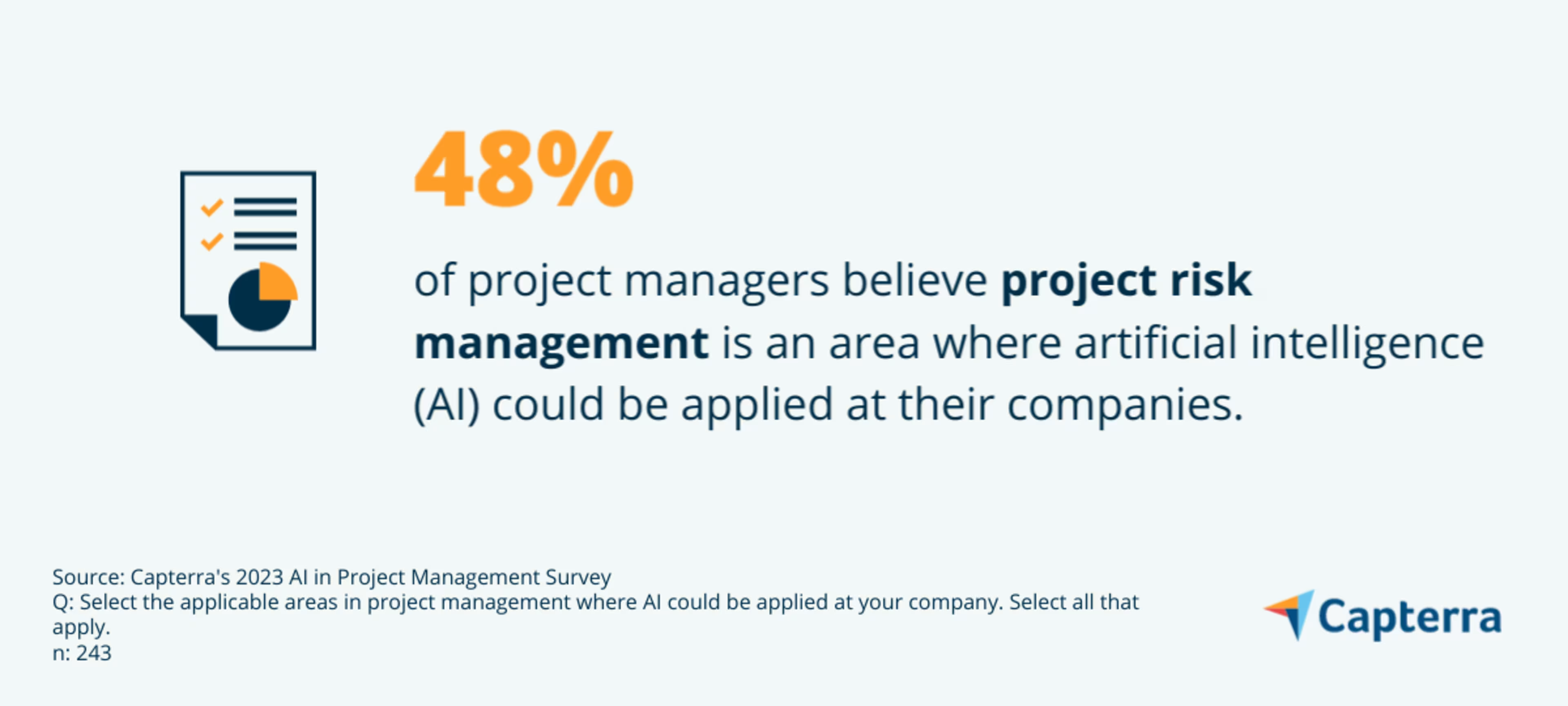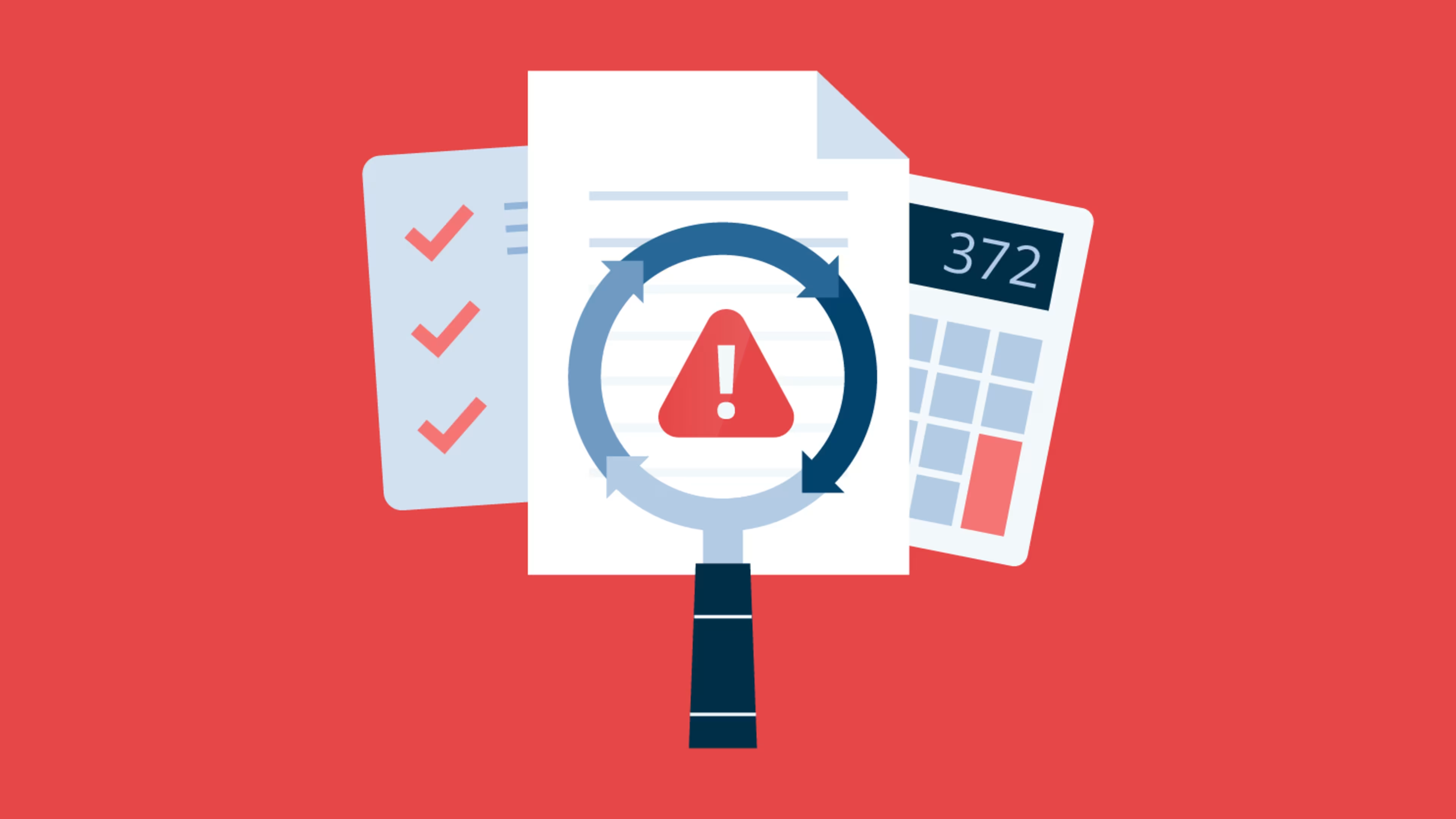Project failure can happen. Learn how to mitigate risks and ensure success.
We all tend to look for possibilities of failure whenever we start, or think of starting, something new. This scenario holds true for project managers as well. Projects can be risky endeavors, and if not managed properly, they can quickly go off the rails. Without proper risk management, projects can have time or cost overruns, resulting in missed deadlines, unbudgeted expenses, and, ultimately, failure.
If you're a project manager, the best way to deal with risks is to prepare for them beforehand and implement risk management strategies to mitigate them. That's why, today, the ability to manage project risks is an essential skill employers look for when hiring project managers.
In this guide, we explain everything you need to know about risk management in project management. Let’s start with understanding the nitty-gritty of project risks.
What is project risk?
Project risk is any potential issue that could negatively impact the successful completion of your projects. Risks could be due to internal or external factors. For instance, a key supplier going out of business and a key team member leaving your organization both qualify as project risks.
Internal factors of project risk
Team-related (e.g., skills gaps, poor communication, personnel changes)
Resource-related (e.g., budget constraints, resource availability, outdated technology)
Organizational (e.g., leadership changes, unclear goals, management styles)
External factors of project risk
Market-related (e.g., market shifts, regulatory changes, economic downturns)
Technological (e.g., vendor management issues, rapid advancements in technology, cybersecurity threats)
Environmental (e.g., natural disasters, political events, pandemics)
Project risk management can help identify, address, and mitigate potential issues that could impact project success.
What is project risk management?
Project risk management is the process of identifying, assessing, and responding to unexpected risks that might affect your project's goals and progress.
Simply put, project risk management is a process that aims to reduce project risks that have already occurred, are occurring, or are likely to occur in the future. It focuses on risk reduction by identifying the root causes of risks and minimizing their impact, if not completely eliminating them.
Why is risk management important?
Identifying and assessing risks is a critical part of the job of a project manager. It helps prioritize your project management efforts. Suppose a risk assessment indicates that the impact of a particular threat will be severe. In that case, you should take the necessary steps to avoid or mitigate that threat in advance.
For any project, there are many risks to consider. The most influential ones are related to project schedule, cost, quality, technology, and resources.
Type of risk | Possibility |
Schedule risk | Project will not be completed on time |
Cost risk | Project cost will exceed the budget |
Quality risk | Project quality will not meet the defined standards |
Technology risk | Selected project management technology will not perform as required |
Resource risk | Team members won't have sufficient skills to complete the project |
Common types of project risks
Let's go through some of the most common types of project risks (and examples) that you may encounter.
Individual project risks can affect the quality, cost, time, and scope of a project (e.g., lack of resources, employee absence).
Overall project risks refer to the impact of uncertainty on the overall project, including individual risks plus all other sources of project uncertainty (e.g., wars or government policy changes).
Variability risks are associated with fluctuations or inaccuracies in demand, supply, quality, price, etc. (e.g., variations in exchange rates and raw material pricing, supplier changes, or unseasonal weather conditions).
Ambiguity risks are due to a lack of clarity in project requirements, leading to misinterpretations or mistakes (e.g., inaccurate requirements from clients or different project scope interpretations).
How to identify potential risks in your project
There are several methods you can use to help you identify potential PM risks:
Perform a SWOT analysis. By assessing your project's strengths, weaknesses, opportunities, and threats, you can consider all possible risks that may occur and plan steps to prevent or reduce them.
Use a risk matrix. It's a tool that rates the probability (low, medium, high) and impact (low, medium, high) of each risk to help you focus on the most likely issues and plan steps for risk mitigation.
Maintain a risk register. Record information about each project management risk (such as its description, potential impact, and likelihood). This risk register helps track identified threats and what actions can be taken to mitigate them.

Consider consolidating risk management processes and data analysis. You can leverage integrated risk management (IRM) software to determine potential project risks early on, prioritize high-impact risks, and improve decision-making.
Steps to manage project risks
Risks are an inherent part of any project. While it's impossible to eliminate all risks, you can limit their impact by managing them. The following steps will help you competently reduce and control all potential project risks.
1. Conduct an internal scan to identify potential risks
As aforementioned, the first step is identifying all potential risks that could affect your project's timeline or goals. This includes closely analyzing the overall project plan and determining any potential issues that could arise.
One of the best ways to ace this step is to conduct an internal scan. This can entail information gathered from brainstorming sessions, risk surveys, workshops, and one-on-one discussions.[1]
Get together with your project team and related stakeholders to solicit input on emerging risks. Also, collect information on competitors to uncover common risk events. This way, everyone is on the same page and understands what could go wrong with the project. If a potential risk does materialize, you've already thought of a plan to fix it in most cases.
A risk matrix and risk register will help you track all the internal and external risks along with their details, such as duration, impact, priority, and status. In addition, you can interview subject matter experts about how the internal and external risks may impact your organization.
2. Analyze the identified risks
Once you identify the risks, start analyzing them to understand how and to what extent they can impact your project. Focus on quantitative and qualitative risk analysis. Quantitative risk analysis assigns a numerical value to risk probability, while qualitative risk analysis identifies and assesses risks that can't be quantified. Both help identify risks that need your immediate attention.
When assessing project management risks, consider three key factors:
Risk probability (likelihood of a risk event occurring)
Risk impact (consequences of a risk event occurring)
Risk vulnerability (the extent of damage that the risk event could cause)
These will help you understand the overall project risk level and plan mitigation measures accordingly. Leverage internal and external resources to monitor and document risks continuously. Frontline professionals should have access to databases and set up alerts to stay informed of emerging risks.
3. Create a response plan
Now that you have a better understanding of potential project risks, it's time to develop a response plan. The response plan should include how you'll address each of the identified high-priority risks. The plan should also be achievable, practical, and tailored to fit your project's specific needs.
Transfer, mitigation, avoidance, and acceptance are four different ways to respond to risks. Based on your risk tolerance, create a response plan to transfer, mitigate, avoid, or accept potential project risks.
/ Pro tip
Leverage project management software to accurately respond to risks. A project management tool with risk management functionalities helps create a centralized repository for all risk-related project data, allowing you to develop a better risk response plan.
4. Implement the response plan
After developing a response plan, it's time to implement it. This will require close coordination between team members and stakeholders. Make sure everyone involved in the project is aware of the risks and knows what they need to do to mitigate them.
To execute the plan effectively, designate someone to be in charge of each step so there is continuity and no confusion. As the project progresses, keep a close eye on the risks and make changes to the response plan as needed.
5. Monitor and evaluate risks
Risk management is not a one-time activity; it's an ongoing process that should be revisited regularly. And that's why you should never stop monitoring and evaluating project risks. Continuous monitoring will allow you to track the progress of mitigation measures, ensure they are effective, and make necessary adjustments when required.
Best practices for proactive monitoring and adapting to project risks
When it comes to ensuring project success, here are a few risk management tips to follow:
Have a clear understanding of the risks involved in your project. Doing this will allow you to develop a mitigation plan unique to your project needs.
Assign the responsibility of managing each risk to a different project team member. This will help ensure each risk is properly managed and monitored.
Put together a plan to manage each identified risk. This will help your project stay on track and avoid any potential issues.
Monitor risks throughout the project lifecycle and make adjustments to your response plan as needed.
/ Pro tip
Consider leveraging project management software and exploring AI capabilities in project management. When project managers were asked the top three reasons their company uses project management software, 26% cited tracking and managing risk.
Project success depends on well-timed risk management
Remember, a well-conceived risk management plan will lead your projects to success. So, it pays to be timely rather than risk project management failure.
Timely risk management helps projects succeed by identifying and mitigating potential risks before they become actual issues. By taking a proactive approach to risk management, you can avoid common pitfalls and costly delays that may lead to project failure. Remember to revisit your risk management plan throughout your project lifecycle and set yourself up for success.

